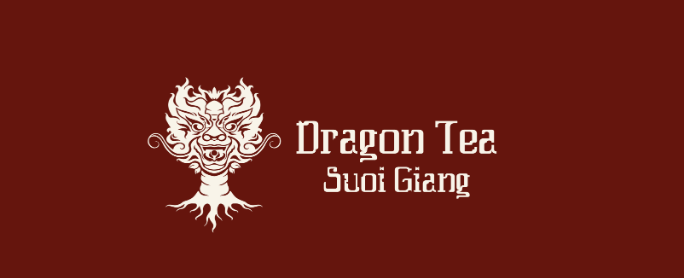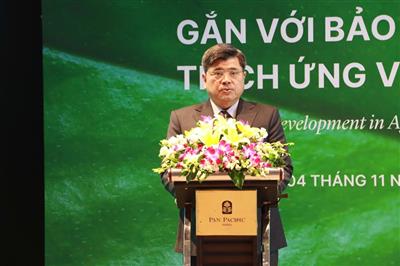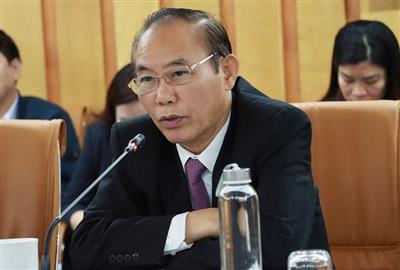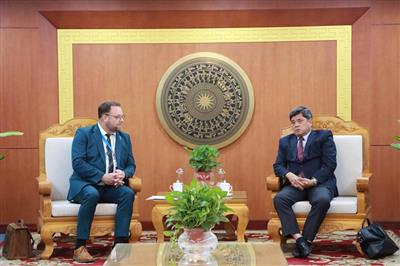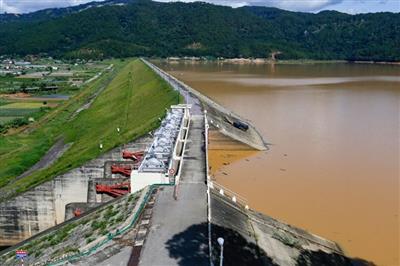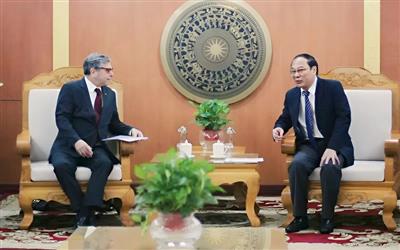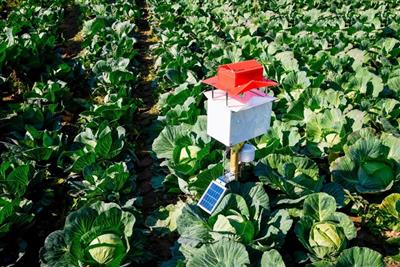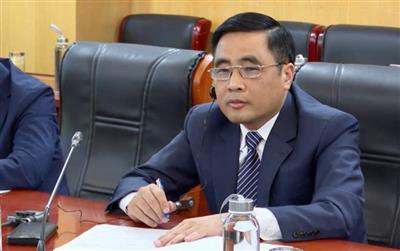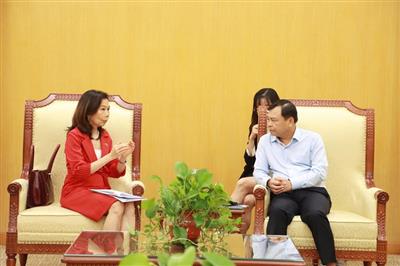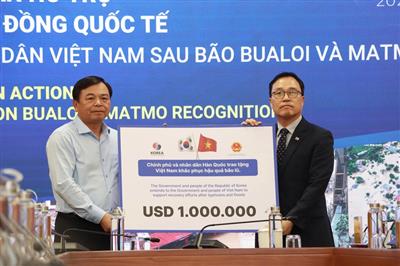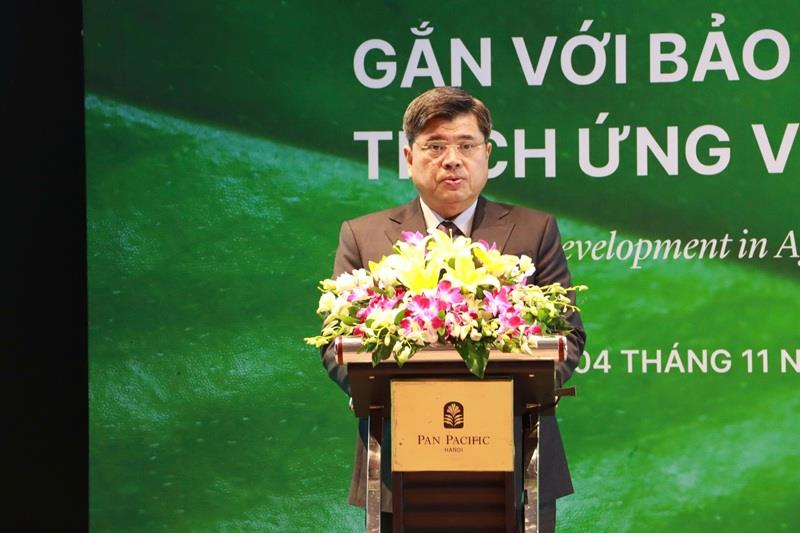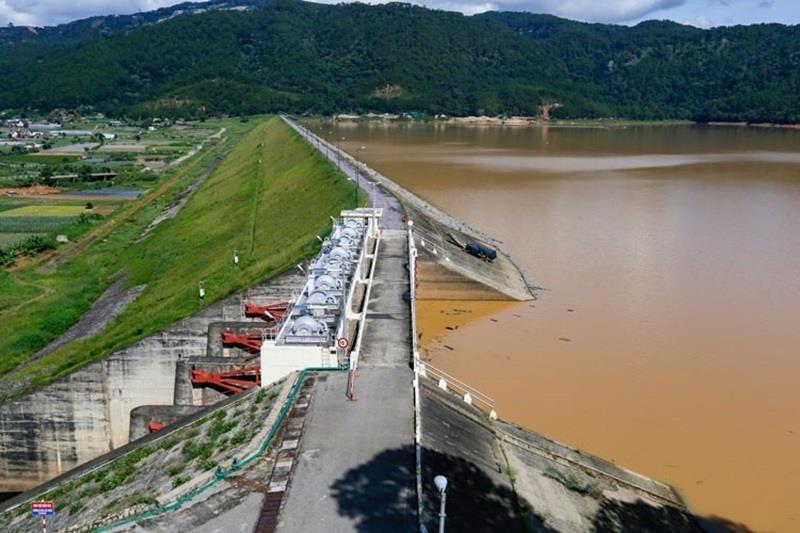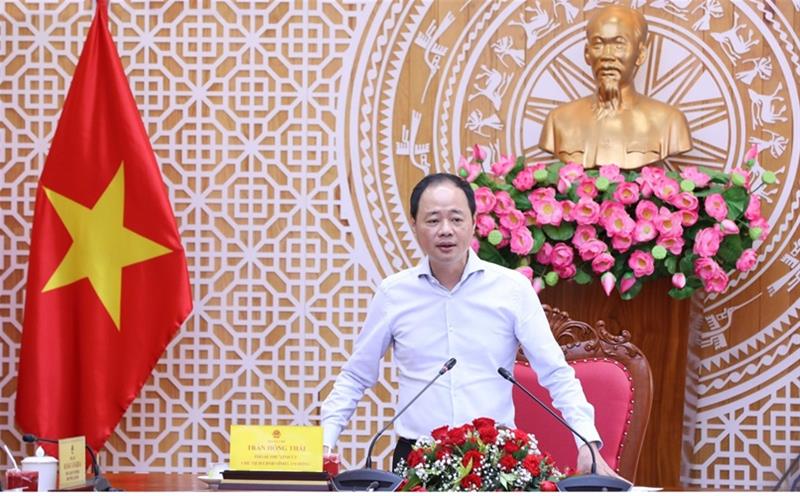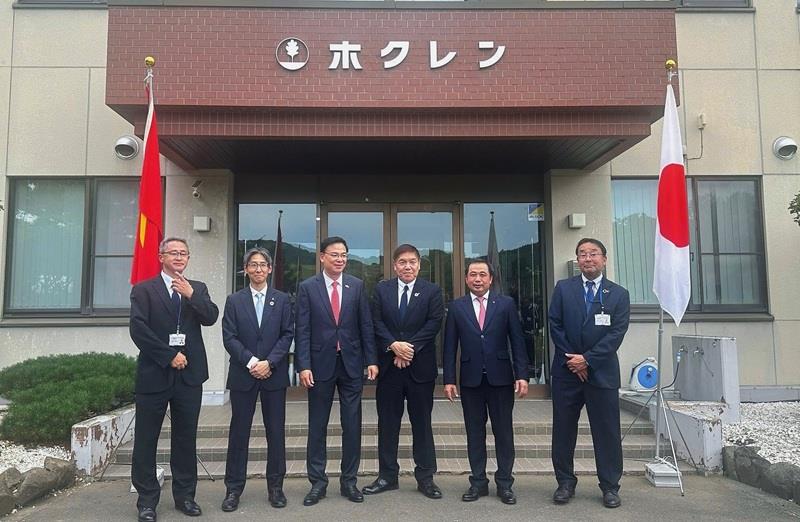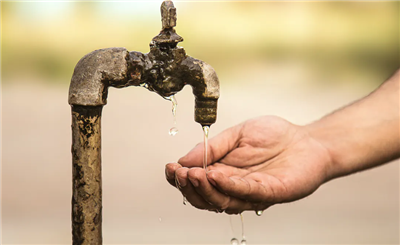
New opportunities for Vietnamese fruits in the U.S. through public-private partnerships
27/08/2025TN&MTOn August 27, 2025, Deputy Minister of Agriculture and Environment Hoang Trung met with representatives of Dragonberry Produce (United States) following the company’s success in introducing fresh Vietnamese lychees into major U.S. retail chains. Both sides agreed to jointly establish a post-harvest packing and treatment facility in northern Vietnam, standardize irradiation procedures, expand the export portfolio to passion fruit and guava, and promote the creation of the “Vietnam specialty produce” brand for distinctive Vietnamese agricultural products.
From the first shipment of lychees to raising post-harvest standards
At the meeting, Deputy Minister Hoang Trung acknowledged Dragonberry Produce’s efforts to commercialize Vietnamese fruit in the U.S. market, highlighting the success of fresh lychee distribution through large retail networks. According to company representatives, demand for tropical fruit in the U.S. is growing rapidly; Vietnamese lychees are particularly favored for their unique sweetness and crisp texture. The successful 2024–2025 season has become a springboard for scaling up in future years.

Deputy Minister Hoang Trung meets with Dragonberry Produce (U.S.) to advance cooperation on post-harvest facilities, irradiation, new fruit exports, and the “Vietnam Specialty Produce” brand
Dragonberry’s Director of Sales James Molamphy emphasized that post-harvest speed and stability are critical to maintaining fruit quality at the point of sale. For lychees, thin-skinned and highly perishable, minimizing the time “from orchard to conveyor belt” is essential. The company therefore proposed establishing a modern packing facility directly in production zones, integrating inspection, grading, rapid cooling, and packaging processes.
Dragonberry also requested government support to expedite the establishment of a selective irradiation facility in northern Vietnam, thereby reducing logistics costs and processing time. At present, lychees from northern provinces must be shipped to Ho Chi Minh City for irradiation, a journey of about five days that heightens the risk of spoilage. Locating irradiation and grading infrastructure closer to growing areas would allow for early detection of damage, more efficient cold storage, and lower losses.
From a regulatory standpoint, Deputy Minister Hoang Trung stressed the need to “raise standards” across the entire pre-export chain, preliminary processing, packing, irradiation, and traceability, through close coordination between enterprises, local authorities, and technical agencies. He affirmed that the Ministry of Agriculture and Environment is prepared to streamline procedures, issue technical guidance, and mobilize resources to develop post-harvest infrastructure that meets the requirements of premium markets.
The Deputy Minister assigned the Plant Production and Protection Department to serve as the focal point for cooperation with Dragonberry, including completing import documentation, providing catalogues of fruit-sorting technology, organizing operator training, and liaising with local governments to bring the project into practice.
Building the “Vietnam specialty produce” brand
Amy Nguyen, CEO of Dragonberry Produce, announced that the company plans to invest in a packing facility in Bắc Ninh, where lychees will be processed immediately after harvest using AI-powered imaging systems to classify ripeness, size, and surface defects. Alongside this, the company is exploring sites in northern Vietnam for an advanced irradiation–grading complex, ensuring a closed “treatment–cooling–packing” chain near production areas to minimize transit time and costs.
According to Ms. Nguyen, the main bottleneck in recent seasons has been the distance and waiting time for irradiation in Ho Chi Minh City, during which fruit quality deteriorates as ripening progresses. A modern irradiation facility near the orchards would help preserve freshness, ensure consistent color and pulp quality, and improve compliance with phytosanitary requirements for import markets.

Deputy Minister Hoang Trung emphasizes raising standards across the pre-export chain and affirms the Ministry’s support in building post-harvest infrastructure to meet premium market requirements
Beyond lychees, Dragonberry proposed adding passion fruit and guava to the export portfolio, two products considered highly promising due to stable supply, international consumer appeal, and versatile processing potential. The company also introduced the idea of developing the “Vietnam specialty produce” brand to enhance visibility, convey product origin, and increase shelf value in major North American retailers and other high-standard markets.
Deputy Minister Hoang Trung welcomed this branding initiative and directed relevant agencies to support Dragonberry with guidance on standards, labeling, traceability, and food safety in line with international practices. The goal, he stressed, is not only to meet U.S. requirements but also to establish a standardized foundation for expansion into Europe and other potential markets.
Market developments have already validated Vietnamese lychees’ progress: in the summer of 2025, the Vietnam Trade Office in San Francisco reported that Dragonberry-imported lychees were stocked at Costco, operating 635 outlets across the U.S. and Canada—and earlier at Safeway. These milestones reinforce the case for upgrading post-harvest infrastructure in northern Vietnam to maintain quality consistency as volumes expand in coming seasons.
Vietnam–U.S. agricultural cooperation in 2025: From multi-billion-dollar MoUs to standardized trade pathways
The year 2025 has seen tangible progress in Vietnam–U.S. agricultural cooperation. During a ministerial mission to several U.S. states (Iowa, Ohio, Maryland) and Washington D.C. from June 2–9, Vietnam advanced a series of strategic trade agreements covering corn, wheat, DDGS, soybean meal, meat, and timber. Vietnamese enterprises signed, or pledged to sign, memoranda of understanding (MoUs) worth an estimated USD 2–3 billion, including five MoUs in Iowa alone valued at around USD 800 million over three years.
From June 2–5, at Iowa State Capitol, the Vietnamese delegation and U.S. associations signed five MoUs on supplying corn, wheat, DDGS, and soybean meal for Vietnam’s feed industry, with participation from Iowa Corn, the U.S. Grains Council, and soybean associations. These agreements formed part of a cooperation package worth approximately USD 2 billion over the course of the trip.
By June 9 in Washington D.C., the consolidated report showed that total signed and pledged commitments approached USD 3 billion. Among the highlights was a USD 380 million agreement with Cargill to supply 1.2 million tons of grain (corn, wheat, soybean meal) for Vietnam’s feed industry.
Alongside trade, both sides also advanced technical and policy cooperation. The U.S. Grains Council signed an MoU with Vietnam to support development of feed–food–fuel industries, including biofuel know-how, technical standards, and supply chain management. This initiative aligns with Vietnam’s targets for biofuel blending and agricultural emissions reduction.
These outcomes came as the two governments accelerated negotiations on trade and market access. In mid-June, Vietnam’s Ministry of Industry and Trade noted progress in Washington talks, though technical barriers and trade balance issues remain to be resolved. This underscores that expanding U.S. agricultural imports is not solely a market-driven choice but also part of a broader policy roadmap.
Market signals are also supportive. In late August 2025, Reuters analysis projected that Vietnam would be among Asian economies increasing purchases of U.S. grains and oilseeds due to pricing and trade structures, reshaping global agricultural flows. This context strengthens the likelihood of MoUs converting swiftly into contracts.
In the fresh fruit sector, the arrival of Vietnamese lychees on Costco and Safeway shelves in July 2025, imported by Dragonberry, demonstrates that Vietnam–U.S. cooperation is extending beyond feed commodities into high-value fresh produce, provided post-harvest standards are met. Domestic media confirmed the scope of distribution (635 Costco outlets across the U.S. and Canada), reinforcing the practical case for investing in irradiation and packing facilities in northern Vietnam.
Overall, the 2025 developments, from the ministerial mission in the U.S. to the entry of fresh fruit into major retail chains, have clarified the key challenge for fruit exports: the bottleneck lies in post-harvest time and standards; the solution is investment in irradiation, AI-based grading, cold storage near production zones, standardized traceability, and unified branding. With regulatory support and proactive business initiatives, expansion beyond lychees to passion fruit and guava appears well within reach in upcoming seasons.
Minh Thao

